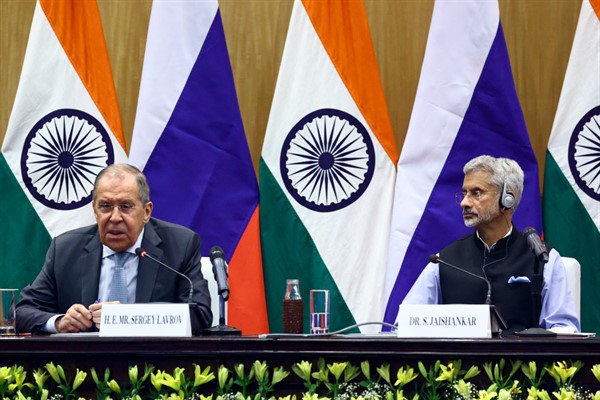In late April, India and Russia announced the establishment of a “2+2” dialogue between each side’s ministers of defense and foreign affairs. Indian Prime Minister Narendra Modi tweeted at the time that this will “add further momentum to our strategic partnership.” Until recently, India had adopted this format only with Australia, Japan and the United States—the other members of the Quadrilateral Security Dialogue, better known as the Quad—while Russia has an equivalent arrangement with only a few select countries.
The announcement comes at a time when geopolitical trends, as well as consequent foreign policy adjustments in both Moscow and New Delhi, have pulled the two powers in opposite directions, raising concerns about the future of their bilateral ties. A more comprehensive dialogue mechanism like the 2+2 could stabilize relations and help prevent further ruptures.
Principal among the two sides’ divergences is their drastically different perspectives on China and the United States. For India, China is its biggest external strategic challenge, and following last year’s bloody clashes along its disputed border with China, there is greater enthusiasm in New Delhi to openly embrace a closer security partnership with Washington. The U.S. also sees India as an indispensable partner in the Indo-Pacific region, and the two sides have deepened their collaborative relationship—characterized by robust defense trade, intelligence sharing and joint military exercises—in the past year. Many analysts in India believe that the country’s relationship with the U.S. is now its most substantive one, with some commentators even advocating abandoning India’s historical ties with Moscow in favor of Washington.

